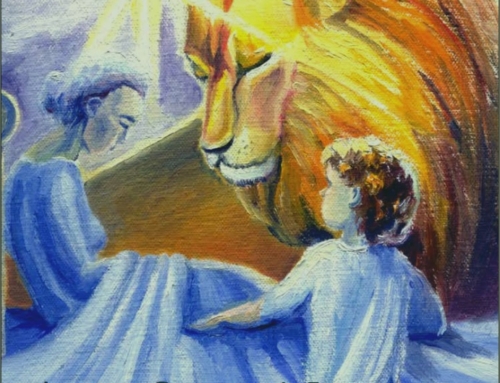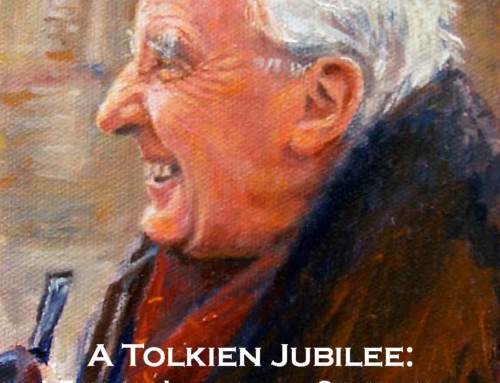In 1934, Cole Porter, in his song “You’re the Top,” from his hit Broadway show Anything Goes, referred to a Shakespeare sonnet as an example of perfection, and in 1948 he based his musical comedy, Kiss Me, Kate, on Shakespeare’s The Taming of the Shrew. Still, something more important than Shakespeare’s influence on America’s greatest lyric poet is the happy fact that so far no one seems to have hit upon the freaky idea of making a Porteresque musical production of King Lear.
In King Lear, as he did in Timon of Athens, Cymbeline, and Pericles, Prince of Tyre, William Shakespeare combined historical elements with aspects of fairy tale. There was a historical Timon, Cymbeline is a version of the name of the historical Cunobelinus, and Pericles, while not the great statesman of classical Athens, evokes ancient Greece. According to Rapheal Holinshed’s Chronicles (1587), Lear was a British king who ruled in the foggily remote past. Thus, his story might well begin, “Once upon a time, there was an old king who had three daughters . . .”
The fairy tale quality of those plays opens them to universal appeal. G. Wilson Knight, in The Wheel of Fire (1949), observed that in King Lear, “Mankind’s relation to the universe is its theme,” so that “We watch, not ancient Britons, but humanity; not England, but the world.” True enough, but a director must set the play in a particular time and place.
The early 1950s had two productions of King Lear that Cole Porter could have seen. One ran for forty-eight performances on Broadway, from Christmas night, 1950, through 3 February, 1951. John Houseman directed the production, giving it a medieval setting, with flowing robes and heavy broadswords, and Louis Calhern starred as Lear. Regarding those eight shows a week for six weeks, Houseman wrote, “I have never understood how Calhern—who was then in his mid-fifties—survived.”
In 1953, then only thirty-eight, Orson Welles had his American television debut. He starred as Lear in Omnibus, a weekly anthology series on CBS. Peter Brook directed the play, and he kept it to around seventy-five minutes by cutting out the subplot. Despite this radical abridgment, Brook chose a conventional approach by setting his King Lear in Shakespeare’s day. Costumes included ruffs and doublets, and Lear wore a chain of office and a spiky crown.
Nearly twenty years after Porter’s death, two other televised versions of King Lear took different paths when it came to scenery and costume. In 1982, for BBC TV, Michael Hordern starred as Lear. On a set as stark as a Puritan meetinghouse, the director, Jonathan Miller, placed King Lear in Shakespeare’s era, costumes again sporting doublets and ruffs. In the next year, Laurence Olivier starred as Lear in his own production, and he staged the opening scene at a dilapidated Stonehenge, while the costumes came across as vaguely Viking.
Apparently, when not choosing a medieval setting, directors prefer to set King Lear in the sixteenth century, with Shakespearean attire to match the Shakespearean language. In contrast, to pick one example, it becomes a safe call to trot out togas and sandals and set Julius Caesar in the first century before Christ. Still, just as it is possible to set Julius Caesar in, for instance, a 1940s mafia family, with Caesar resembling Vito Corleone, so could King Lear be set in the Edwardian era, with Lear resembling Edward VII. All the same, a case could be made for setting King Lear during the early Roman empire.
In 1994, at Dickinson College, the Mermaid Players presented King Lear. Among the memorable features of that student production was its use of ancient Roman staging, so that on stage were simply three doors. As in an ancient Roman (or Greek, for that matter) drama, those three doors could then stand in for any combination of places, such as a house, a temple, and a cave.
With the role of Lear being beyond even the most talented collegian, a retired drama professor and professional actor, David Brubaker, played the part. Best known for his comedic roles at a local theatre, Allenberry Playhouse, Brubaker’s Lear showed his range. Then aged seventy, Brubaker variously roared and muttered and sobbed the character into life. However, as he and his fellow actors used those three Roman-style doors, they wore medieval tunics and capes.
A challenge facing any director of King Lear comes from how to contend with the play’s anachronisms. To set the play several centuries before Shakespeare’s own time requires pretending there would be nothing amiss with Gloucester wearing eyeglasses, something not invented until the late thirteenth century. To set the play in Shakespearean times means coping with the characters invoking ancient Roman gods. Even so, anachronisms are nothing new in Shakespeare’s plays. In Julius Caesar Shakespeare took for granted the antiquity of such medieval inventions as chimneys and clocks that strike the hour.
In A. D. 43, the Roman emperor Claudius launched a successful invasion of Britain. Some ninety years earlier, Julius Caesar had attempted to conquer the island but withdrew his troops. In Agricola, the life of his father-in-law, a governor of Roman Britain, Tacitus mentions that Julius Caesar was the first Roman to go to Britain with an army. By implication, Romans had gone there as civilians, probably as merchants.
So, one way to portray Lear and his world would be during those decades between the two Roman invasions. Trade with Rome could have resulted in a mismatched wardrobe of Roman togas and Celtic trousers, laurel crowns and drinking horns. When in Act I, Scene 1 Lear warns Kent, “Come not between the dragon and his wrath,” he could point to his royal standard that bears a sinewy red Welsh kind of dragon.
A production company with a limited budget could opt for a minimalist set. Along with using the three Roman doors, light and shadow could interplay to make scenes as atmospheric as anything in Macbeth. Rather than trappings suggestive of Tudor majesty, Lear could hold court at a still intact Stonehenge, the stones made up of grey boxes fitting together with apparent seamlessness. Then, as the relationships in the play, as well as Lear’s sanity, disintegrate, the actors or Kabuki-style stagehands dismantle the blocks one by one. By the end of the play, the stage is dotted with isolated grey blocks, like gravestones, amidst characters dead or distraught.






Leave a Reply